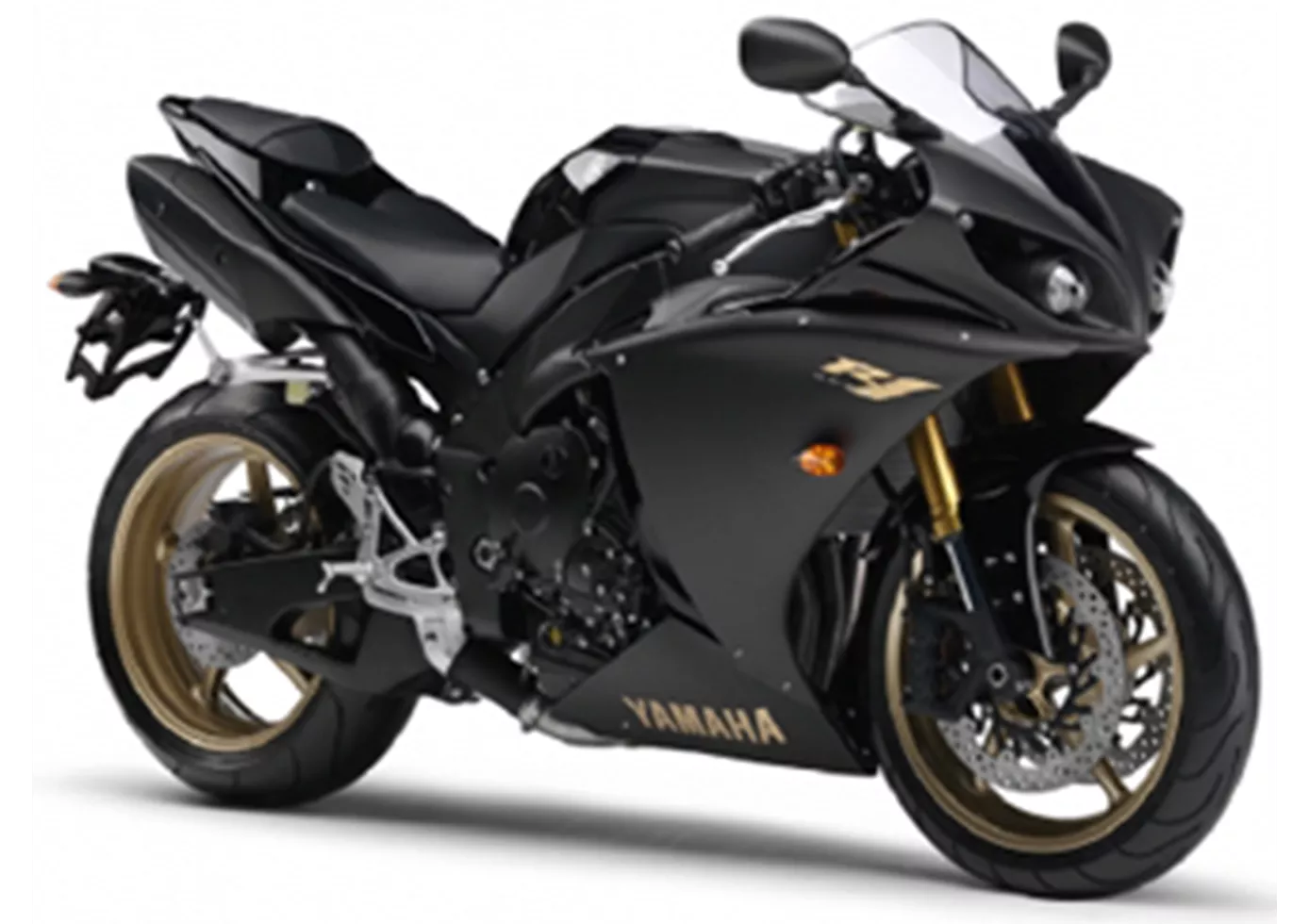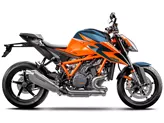Yamaha R1 2010 vs. Yamaha R1M 2019

Yamaha R1 2010

Yamaha R1M 2019
Overview - Yamaha R1 2010 vs Yamaha R1M 2019
The Yamaha R1 model year 2010 and the Yamaha R1M model year 2019 are both supersport motorcycles from Yamaha, but they have some notable differences in terms of technical specifications and strengths.
Starting with the engine and drive train, the Yamaha R1 2010 has a bore of 78 mm and a stroke of 52.2 mm, while the Yamaha R1M 2019 has a slightly larger bore of 79 mm and a shorter stroke of 50.9 mm. This difference in dimensions results in the Yamaha R1M 2019 having a higher engine power of 200 HP compared to the 181 HP of the Yamaha R1 2010. However, the Yamaha R1 2010 has a higher torque of 115.5 Nm compared to the 112.4 Nm of the Yamaha R1M 2019. Both motorcycles have 4 cylinders and 4 valves per cylinder, as well as DOHC valve configuration. They also have the same engine displacement of 998 ccm.
In terms of suspension, both motorcycles feature upside-down telescopic forks at the front. However, the Yamaha R1M 2019 has the advantage of electronic Öhlins suspension, which provides better control and adjustability compared to the suboptimal suspension elements of the Yamaha R1 2010.

Yamaha R1 2010
Both motorcycles have an aluminium frame with a Deltabox frame type, ensuring a sturdy and lightweight chassis. They also have double disk brakes at the front for optimal braking performance.
When it comes to dimensions and weights, there are some differences between the two models. The Yamaha R1 2010 has a front tyre width of 120 mm and a rear tyre width of 190 mm, while the Yamaha R1M 2019 has a slightly wider rear tyre width of 200 mm. Both motorcycles have a front tyre diameter of 17 inches and a rear tyre diameter of 17 inches. The Yamaha R1 2010 has a wheelbase of 1415 mm, while the Yamaha R1M 2019 has a slightly shorter wheelbase of 1405 mm. The seat height of the Yamaha R1 2010 is 835 mm, while the Yamaha R1M 2019 has a slightly higher seat height of 855 mm. Additionally, the Yamaha R1 2010 has a larger fuel tank capacity of 18 liters compared to the 17 liters of the Yamaha R1M 2019.

Yamaha R1M 2019
In terms of strengths, the Yamaha R1 2010 is known for its strong engine and sophisticated engine character. It also has an optimal braking system and a comfortable seating position. On the other hand, the Yamaha R1M 2019 is praised for its powerful engine and clean throttle response. It also features electronic Öhlins suspension, making it perfect for racing on slicks.
However, both motorcycles have their weaknesses. The Yamaha R1 2010 is criticized for its suboptimal suspension elements, which may affect its overall performance. It also has a slightly low peak power and slightly weak traction. Additionally, it has a higher weight compared to the Yamaha R1M 2019. On the other hand, the Yamaha R1M 2019 has been reported to have an ABS system that is not 100 per cent satisfactory, which may be a concern for riders.
In conclusion, the Yamaha R1 2010 and the Yamaha R1M 2019 have their own strengths and weaknesses. While the Yamaha R1 2010 offers a strong engine and comfortable seating position, the Yamaha R1M 2019 boasts a more powerful engine and electronic Öhlins suspension. Riders should consider their specific needs and preferences when choosing between these two models.
Technical Specifications Yamaha R1 2010 compared to Yamaha R1M 2019
Pros and Cons in comparison
Pros and Cons in comparison
Yamaha R1 2010

The current engine in the R1 scores points above all with its unmistakable sound, very transparent response and linear power delivery. In terms of peak power, however, Yamaha had to cut back a little.
Yamaha R1M 2019

The Yamaha YZF-R1M takes the excellent base of the 'normal' R1 and, thanks to electronic Öhlins suspension and visual stimuli, patterns itself into an excellent race track bike that is well suited for serious racing. Only the ABS system reacts too cautiously, which led to several braking incidents.
Price Comparison Avarage Market Price Yamaha R1 vs Yamaha R1M
There are a few key differences between a Yamaha R1 2010 and a Yamaha R1M 2019. There are the same number of bikes of both models available on the 1000PS.de marketplace, specifically 5. It takes less time to sell a Yamaha R1M with 51 days compared to 53 days for the Yamaha R1. Since model year 2005 1000PS.de editors have written 80 reviews for the Yamaha R1 and 26 reviews for the Yamaha R1M since model year 2015. The first review for the Yamaha R1 was published on 28/04/2003 and now has more than 3,900 views. This compares to more than 9,700 views for the first review on Yamaha R1M published on 03/12/2014.
























